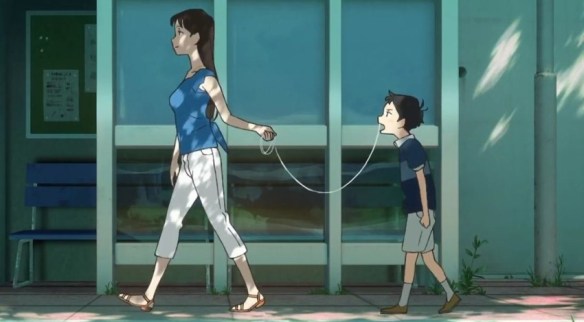 When the young lady of the manor Irma (Ester Toivonen) goes off on a trip, her feckless nephew Erkki (Jorma Nortimo) hits on a money-making scheme with his new-found drinking buddy Mauri (Toivo Palomurto). Posing as hoteliers, they rent out rooms in Irma’s country mansion, persuading the gullible house-maids that all the new residents are long-lost friends. Comedy, such as it is, arrives with the titular All Kinds of Guests, including a honeymooning couple, a hypochondriac lawyer and a randy retired colonel.
When the young lady of the manor Irma (Ester Toivonen) goes off on a trip, her feckless nephew Erkki (Jorma Nortimo) hits on a money-making scheme with his new-found drinking buddy Mauri (Toivo Palomurto). Posing as hoteliers, they rent out rooms in Irma’s country mansion, persuading the gullible house-maids that all the new residents are long-lost friends. Comedy, such as it is, arrives with the titular All Kinds of Guests, including a honeymooning couple, a hypochondriac lawyer and a randy retired colonel.
This adaptation of Kaikenlaisia vieraita, a 1934 stage play by “Agapetus” (Yrjö Soini) is not quite as low on laughs as the earlier Scapegoat (1935), but nevertheless struggles with a cast so large that it sometimes forgets where the plot should be going. Matters are not helped by a tediously unfunny ten-minute sequence in which Erkki misses his train and gets falling-down drunk, watches a drunken Finn murder “La donna è mobile” from Verdi’s Rigoletto, and is then mistaken for a thief when he sneaks into his aunt’s house at night. There are, however, some genuine laughs to be had from the servants – stern Finnish farm-girls who collapse into giggles at the sight of a handsome man – and the widow Mrs Salo (Emmi Jurkka), who is at first repelled by, then extremely enthusiastic about the overtures of the bawdy Colonel Sora (Aku Korhonen).
Still struggling after the death of its founder, Erkki Karu, the Suomen Filmiteollisuus studio seemingly slapped this together with whomever and whatever it had lying around. Nominal director Toivo Särkkä shares the credit with Yrjö Norta, although the film is notable for a surfeit of camera trickery, as if the cinematographer has been left to his own devices and wants to play with a new toy. The first sign comes in the opening credits, as each on-screen card transitions out with a wipe. This innocuous innovation is soon creating special effects between matched shots, such as a “magic trick” in which newly-wed Paavo (Kaarlo Kartio) gets his wedding ring to jump between his fingers, or a stunt in which he hurls a record across the room to land squarely in place on the gramophone. The most obvious use comes in the dual role of Laila Rihte, who is called upon to play both the honeymooning Hilkka and the house manager’s daughter Elli, whose identical appearance is introduced as a costly but ultimately minor plot device. Rihte’s sister Lea occasionally appears as a body double in long shots featuring the two – presumably, the crew were planning on making much more of the peas-in-a-pod subplot, but gave up on it partway when the set-ups proved too fiddly.
 Gently stereotypical humour pivots on the minor characters, including a fat German couple (Uuno Montonen and Eine Laine), who descend on the dinner buffet like vultures. Writer and future director Turo Kartto has a supercilious turn as The Englishman, a monocled twit who is aghast at the state of Finnish food and frustrated by the Finns’ inability to speak English. Even in silence he exudes a snooty desire to be elsewhere, fishing from the back of a boat while the rest of the cast try to enjoy a day out. His spouse, played by director Särkkä’s real-life wife Margarita, remains silent throughout, possibly because as a Russian-Lithuanian, she wouldn’t have sounded very English if she spoke.
Gently stereotypical humour pivots on the minor characters, including a fat German couple (Uuno Montonen and Eine Laine), who descend on the dinner buffet like vultures. Writer and future director Turo Kartto has a supercilious turn as The Englishman, a monocled twit who is aghast at the state of Finnish food and frustrated by the Finns’ inability to speak English. Even in silence he exudes a snooty desire to be elsewhere, fishing from the back of a boat while the rest of the cast try to enjoy a day out. His spouse, played by director Särkkä’s real-life wife Margarita, remains silent throughout, possibly because as a Russian-Lithuanian, she wouldn’t have sounded very English if she spoke.
Inevitably, the lady of the manor returns – Ester Toivonen sporting Nosferatu eyebrows – and wryly plays along with Mauri as he flirtatiously tells her she can have the best room in his “hotel.” Surprisingly forgiving of the man who has invaded her home and sold the contents of her larder to strangers, she falls for him in what passes for the film’s romantic denouement; one of several couples formed in the course of the story. All is revealed, of course, when Erkki comes face to face with his aunt – he runs off into the distance in cartoonish double-time; the second occasion in this film where the cinematographer plays that trick.
Jonathan Clements is the author of An Armchair Traveller’s History of Finland.





